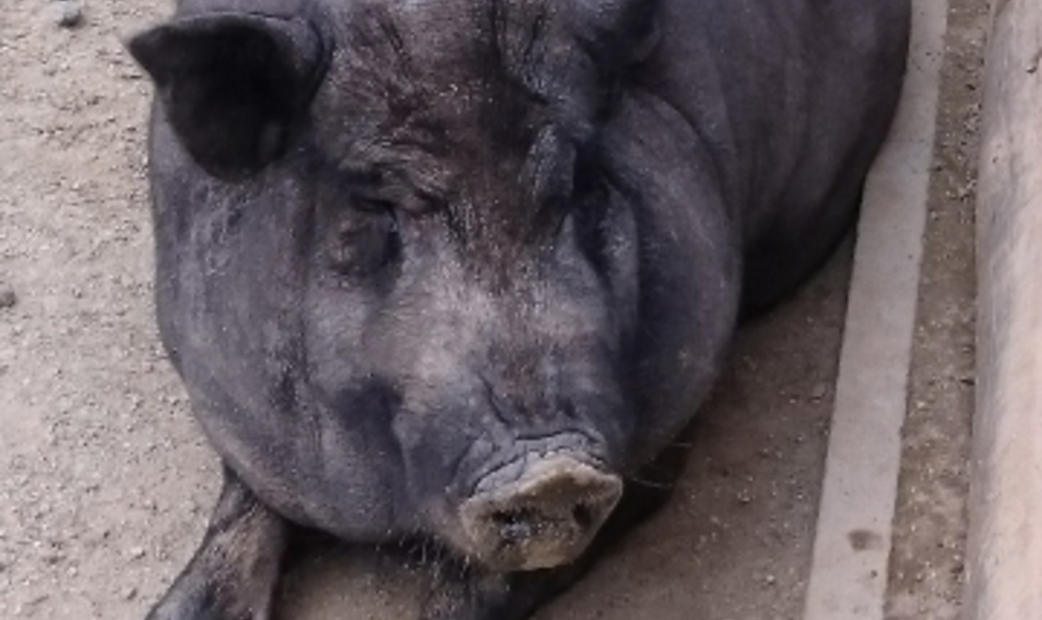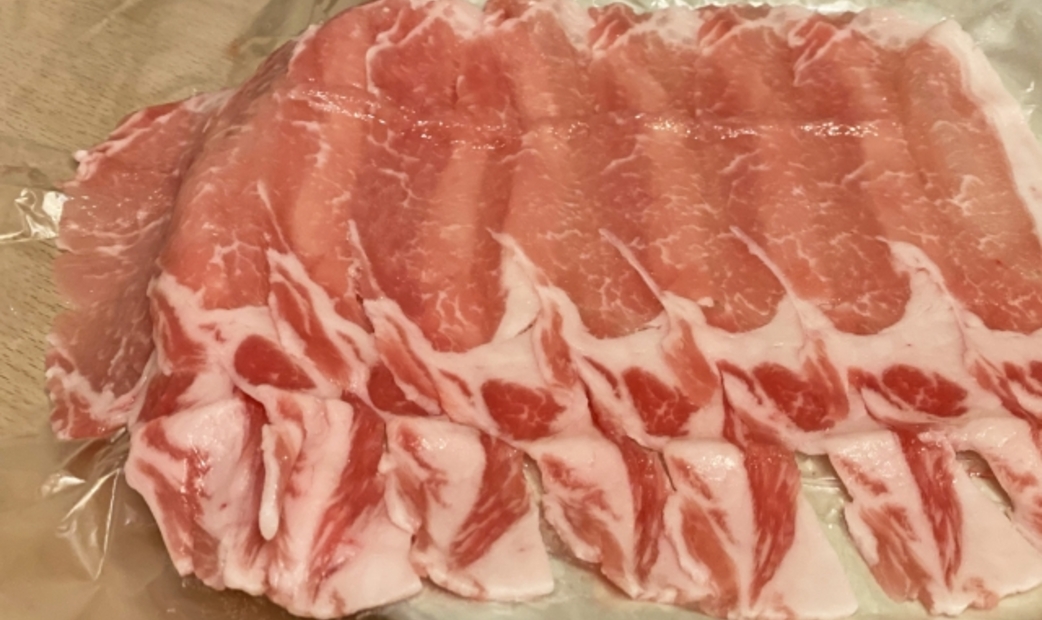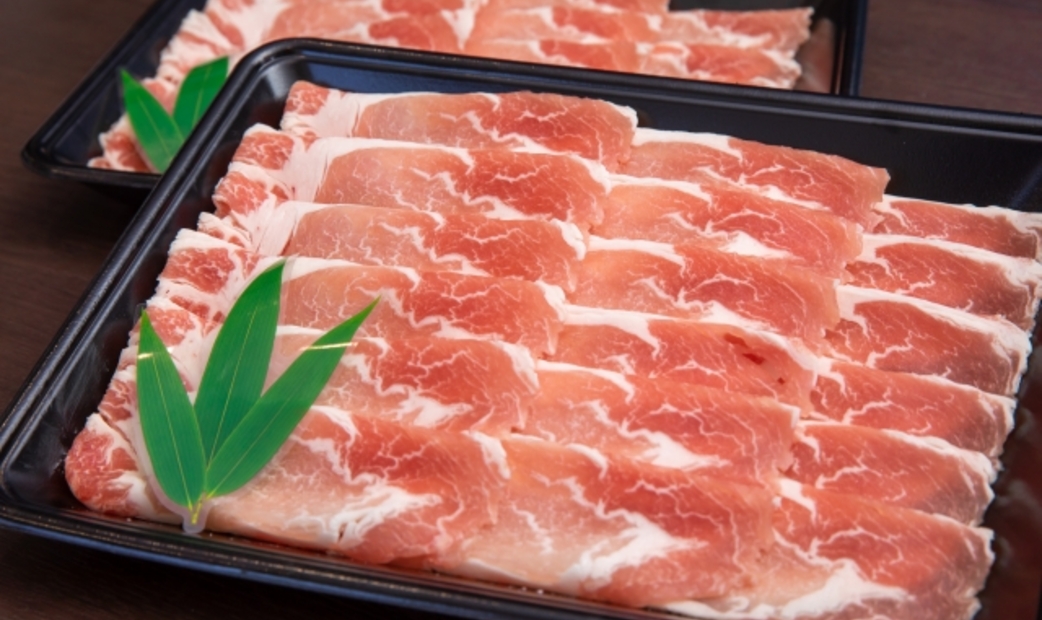
Japan's Premium Pork Brands
Iconic, rare, and up and coming pork brands selected by the most discerning restaurants in Japan. Many travelers know Kobe beef is world-class meat, but Japan's pork is less widely known. Enjoy this introduction by OMAKASE Eatinerary, a MICHELIN Guide partner.
Introduction
Diners are already familiar with Japanese branded beef products thanks to the ubiquitousness of the Kobe Beef brand. However, the rise of tonkotsu ramen, tonkatsu, and shabu shabu in modern diets have made branded pork increasingly appealing to chefs and guests alike.
Plenty of diners understand and even look forward to the premium price tag on Hida and Kobe beef as a marker of strict breeding and rearing. The increasing relevance of premium branded pork offers a new reason to splurge on the most luxurious comfort foods available. Depending on feed and environment, the character of the meat, even within a single breed changes significantly. Thus, much like Japan’s regional vegetables and seasonal specialties, pork can be enjoyed based on its rearing.

Animals raised on food production waste, such as bread and soy byproducts have a richer, more fragrant meat that contributes to the porky-ness of a tonkotsu broth or cutlet. In contrast, those animals raised on rice or with yogurt and other fermented feed have lighter tasting meat that can be enjoyed in shabu shabu hot pot or yakiniku. Concentration of oleic acid, fat melting point, and other nutritional factors also vary substantially.
There are as many as 400-500 registered pork brands in Japan. This guide, presented by OMAKASE Eatinerary, a MICHELIN Guide partner, will introduce iconic, rare, and up and coming pork brands selected by the most discerning restaurants in Japan. Among these, there may be a pork brand destined to achieve the same global prestige as Kobe beef.

A primer on pork labeling
Many cuts of pork in Japan proudly display terms like sangenton, kurobuta and spf alongside the more easily recognized “domestically raised” kokusan label.

Sangenton refers to the number of breeds crossed to make a farm’s stock. Large white, berkshire, duroc, landrace, and a few more fill the roster of common breeds. Sangenton are highly evaluated because they require two previous generations and aren’t bred themselves.
Sangenton piglets are limited to a single generation and not inter or crossbred, making them a prized and labor-intensive livestock option. Raising sangenton pork requires farmers to go through two unproductive breeding cycles before producing any market-ready pigs. Compare that to beef strains like Kobe cows, which are all from a single, regionally restricted stock, and it's easy to understand how this highly-specialized cross bred pork is a premium ingredient. Kurobuta generally refers to Berkshire pigs, known for their black coats and rich flavor, though the term is sometimes loosely used for other black-skinned breeds.
SPF refers to a type of facilities and conditions under which pigs were raised. Selected pathogen free farms are labeled SPF after receiving (and maintaining) certification. SPF pork certification attempts to guarantee a level of sanitation, quality of life, and deliciousness.

Japan’s branded pork
TOKYO-X
Remarkable for its beef-like marbling, TOKYO X pork has a healthy pink tone and superior flavor. Fewer than 10000 TOKYO X pigs are reared annually, making the pork as prized for its rarity as for its flavor. Although breeding extends to neighboring prefectures within the Kanto region, TOKYO X meat can only be sold within Tokyo.
TOKYO X is not just a brand, but also the first official new breed of pork to be registered in Japan. Unlike other sangenton, the TOKYO X cross of Beijing black, berkshire and duroc pigs have become their own breed with a continuous lineage of TOKYO X + TOKYO X breeding. TOKYO X pigs were first registered in 1997. A devoted rearing guide and breed standard limits farming practices, not unlike Kobe beef.
Hirata Farm Kinkaton
Hirata Farms in Yamagata prefecture has registered its own branded sangenton, but it also raises kinkaton pigs, a Chinese breed known for making one of the world’s top 3 ham varieties. The farm started with just two animals in 1953 and began the kinkaton breeding program in 1988. A decade later, to control the agricultural process more completely, Hirata Farms began to grow its own rice for feed.

Now, Hirata Farm is known as one of the country’s leading pork producers. By taking an active role from breeding to feed development to pork product manufacturing, the day 0 hands on approach of Hirata farm has led to a superb quality of meat with the highest marbling ratings possible – equivalent to A5 beef. Its rice-raised pork also features fat with high oleic acid, the nutrient in olive oil credited to many of its health benefits.
Kagoshima Kurobuta

Some sources claim Kagoshima kurobuta pigs descend from English Berkshire pigs brought to Japan as diplomatic gifts, while others trace the lineage to indigenous breeds such as the Agu pig. However, other sources report the breed to have originated with Agu pigs native to Okinawa. Agu pigs may have been introduced to Kagoshima as early as the 16th century by the samurai Shimazu Iehisa. In modern agriculture, these pigs have likely been cross bred with the gifted berkshires to create today’s Kagoshima kurobuta.
Either way, it’s agreed that the breed has thrived in Kagoshima, feeding on locally grown sweet potatoes in the rich volcanic soil. Although other kurobuta (black pig) breeds are also registered as branded pork, the Kagoshima Kurobuta reigns above them all. These pigs are raised in small numbers each year and their pork is prized for its flavor and mouthfeel.
Okinawan Agu Pork

A native breed to Okinawa, the agu pork is black skinned with easy to eat, mild fat. An indigenous breed of pork that might be linked to similar species throughout Oceania, the animals mature slowly and may only grow to half the size of Western stock. The island's warm climate adds to their superior flavor and texture. Pork is a staple food in Okinawa, where dishes like lafuta and sokki are representative local favorites.
Agu pork has three definitive characteristics, the most important of which is its textural, almost flavorless fat. The fat enhances the melt-in-the-mouth texture of thick cuts of Agu pork, offering a clean finish without any heavy aftertaste. The meat is sweet, without as much umami as pigs raised in colder climates, and melt-in-the mouth tender.
Other notable brands

Akita’s ecobuu brand
Akita’s ecobuu brand fights food loss through animal rearing and produces high end pork with a sustainable bent. The pigs eat leftover noodles and bread, ensuring a high standard of feed.
Iwate prefecture’s Sasuke pork
Iwate prefecture’s Sasuke pork is raised in such a way that its fat melts at 3 degrees celsius lower than ordinary pork, giving it a unique texture and requiring delicate application in preparation.
Ishikawa prefecture’s Noto pork.
Noto pork, Ishikawa’s well known brand, has developed its own breed, Alpha no Megumi, with a higher than average presence of alpha-linoleic acid.
Ibaraki prefecture’s Rose pork
Rose pork from Ibaraki is also highly praised for its distinct pink color and flavor.
Gunma has famous Tonkatsu road
Gunma, with its famous Tonkatsu road, has a long history of pork production, including Akashiro pork directly raised by the JA agricultural research organization. Increasingly, specialty farms like Yamanishi (which claims its pork has a fat so light tasting you could drink it!) are focusing on small-batch and direct shipping pork to enthusiasts or cobranding with larger entities for better sales. These individually owned farms also often serve exquisite quality pork.
Where to try premium pork in Tokyo
Tonkatsu Hajime
Located in Nihonbashi, Tonkatsu Hajime serves a wide variety of pork, including a four-breed blend aged for ten days and a rotating selection of branded pork from around the country. Thanks to the explosion of its popularity, the restaurant has also developed its own brand of pork, Hajime no Yume, raised in Hokkaido. Aged 14 days before serving, its fat has a low melting point and strong flavor, making it a good choice for tonkatsu.
- Operation hours
- Tue – Fri: 11:00 AM – 9:00 PM (Last Order for Food: 8:00 PM)
Sat, Sun & Public Holidays: 10:00 AM – 9:00 PM - Regular holiday
- Monday
- Price range
- JPY 1,500 - JPY 3,000
- Address
- 1F, Ikeda Building, 1-13-9 Nihonbashi Muromachi, Chuo-ku, Tokyo
- Nearest station
- Mitsukoshimae
- Payment methods
- Credit card, Electronic money, QR code payments
- Seats
- 10 Seats

Tonkatsu.jp
“Travel by tonkatsu” in Omotesando. The restaurant chooses its stock from 500 branded and selectively raised pork varieties, allowing diners to select a few favorites for their meal. This is the perfect place to experience the difference between black pigs and sangenton, rice-raised pork and wheat-raised pork and so on head-to-head. The restaurant believes that by understanding the environment in which pigs were raised, what they ate, and the philosophy of their farmers, visitors will enjoy a more impactful tonkatsu experience.
- Operation hours
- Wed, Thu, Fri
11:30 a.m. - 3:30 p.m.
5:30 p.m. - 9:00 p.m.
Sat, Sun
11:00 a.m. - 3:00 p.m.
5:00 p.m. - 21:00 p.m. - Regular holiday
- Mon, Tue,
- Price range
- JPY 1,500 - JPY9,000
- Address
- FN Bldg. 1F, 3-9-9 Kita-Aoyama, Minato-ku, Tokyo
- Nearest station
- Omotesando Station
- Directions from station
- 3 minutes walk from Omotesando Station Exit B2
- Payment methods
- Credit card, Electronic money, QR code
- Seats
- 13 seats

Fry-ya
Not an average tonkatsu restaurant, Fry-ya serves course meals with katsu as the centerpiece. While premium pork is one of the delicious morsels guests enjoy at Fry-ya, chicken, beef, seafood, and vegetables all have their place on the menu.
- Operation hours
- Lunch:11:00 AM - 02:30 PM(L.O. 02:00 PM)
Dinner:05:30 PM - 09:30 PM(L.O. 09:00 PM) - Regular holiday
- Irregular holidays
- Price range
-
Lunch: USD 17.83 - USD 33.43
Dinner: USD 59.44 - USD 89.16 - Address
- Ozawa Building B1F, 1-32-11, Takadanobaba, Shinjuku‐ku, Tokyo
- Nearest station
- Takadanobaba Station
- Directions from station
- 3 minutes walk fromTakadanobaba Station
- Payment methods
- Credit card available
- Seats
- 16 Seats
-
Richard Roe5.0Posted on :05/22/2025
-
Sara5.0Posted on :04/23/2025
-
Lee-Lin Wong4.7Posted on :03/30/2025
Horumon Yaki Rukuma
Horumon Yaki Rukuma is a yakiniku restaurant focusing on pork offal. Its defining feature is the use of day-zero meat, which is butchered the same day it is served in the restaurant. On Wednesdays, diners can enjoy an all-branded-pork course using Tenjiro Kurobuta brand pork from Izu, Shizuoka. The meat is light tasting and melts gently on the tongue.
- Operation hours
- 5:00 PM - 12:00 AM (Last Order: 10:00 PM)
- Regular holiday
- Sundays, Holidays
- Price range
- Dinner: USD 63.69 - USD 63.69
- Address
- B1, Ishii Building, 2-3-5, Ebisu Nishi , Shibuya-ku, Tokyo
- Nearest station
- Ebisu Station
- Directions from station
- 7 minutes walk from Ebisu Station
- Payment methods
- Cash, Credit card available
- Seats
- 42 Seats
- Awards
-
Awards
-
Matteo Battarra4.8Posted on :05/24/2024
-
鍾5.0Posted on :11/14/2023

.jpg)